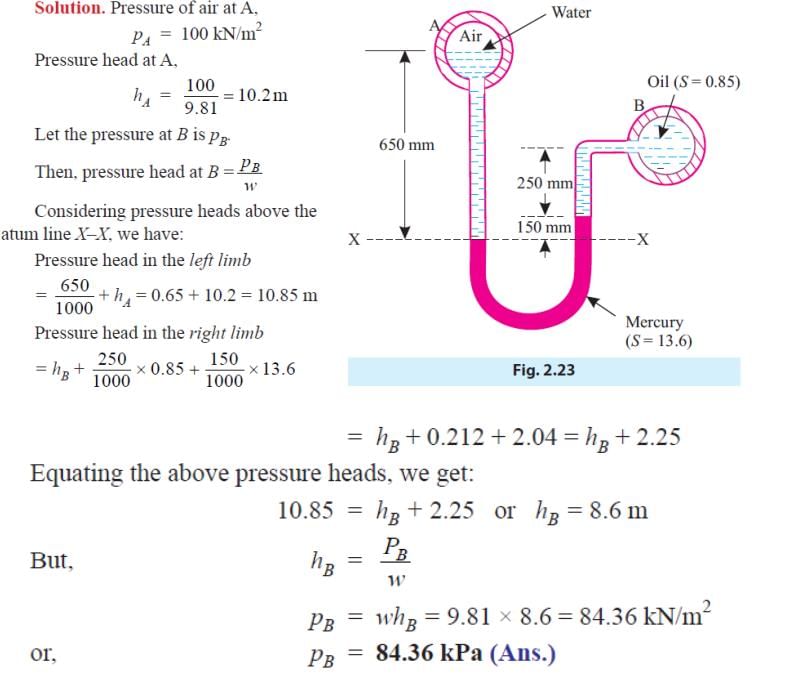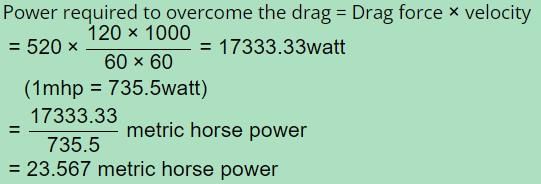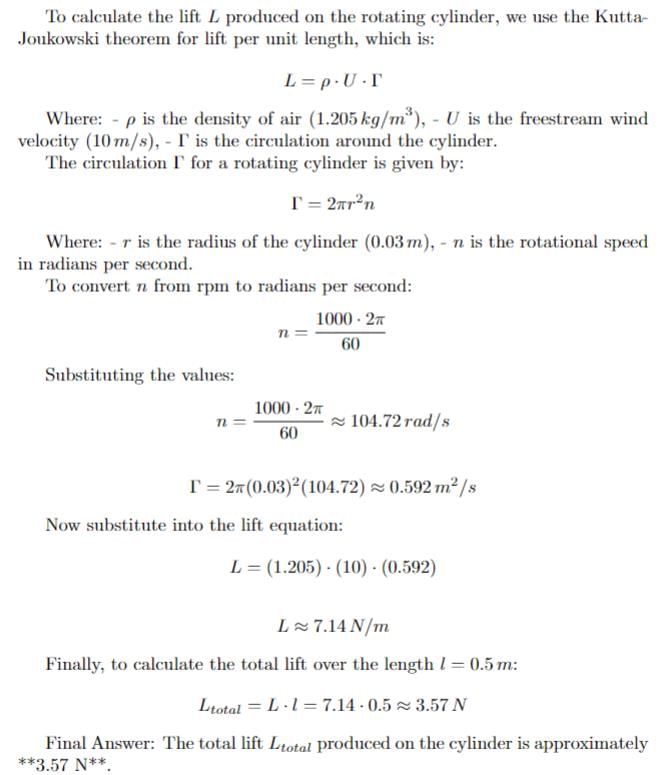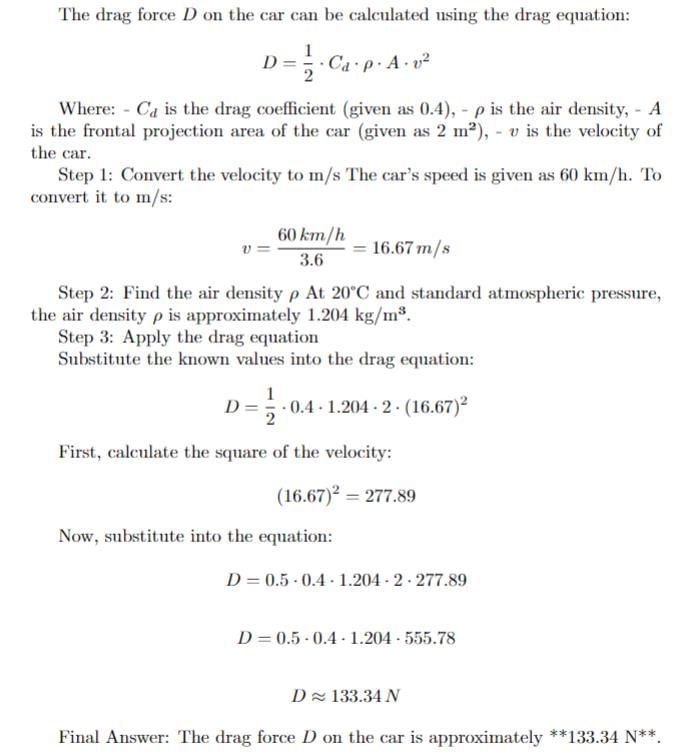Test: Pressure & Its Measurements, Reciprocating Pumps, Flow Around Submerged Bodies - Drag & Lift - 2 - Mechanical Engineering MCQ
20 Questions MCQ Test - Test: Pressure & Its Measurements, Reciprocating Pumps, Flow Around Submerged Bodies - Drag & Lift - 2
In an open U tube containing mercury, kerosene of specificgravity 0·8 is poured into one of its limbs so that the length ofcolumn of kerosene is about 40 cm. The level of mercury columnin that limb is lowered approximately by how much?
Which of following are the beneficial effects of air vessel fitted to delivery side of a reciprocating pump?
1. Constant rate of discharge can be ensured
2. Power consumption can be reduced
3. Discharge can be increased
4. Constant velocity of the piston can be ensured
Select the correct answer using the codes given below:
Codes:
1. Constant rate of discharge can be ensured
2. Power consumption can be reduced
3. Discharge can be increased
4. Constant velocity of the piston can be ensured
Select the correct answer using the codes given below:
Codes:
| 1 Crore+ students have signed up on EduRev. Have you? Download the App |
Match List-I with List-II and select the correct answer using the codes given below the lists:



Assertion (A): Aircraft wings are slotted to control separation of boundary layer especially at large angles of attack.
Reason (R): This helps to increase the lift and the aircraft can take off from, and land on, short runways.
Figure shows a differential manometer connected at two points A and B. At A air pressure is 100 kN/m2 . Find the absolute pressure at B in kPa
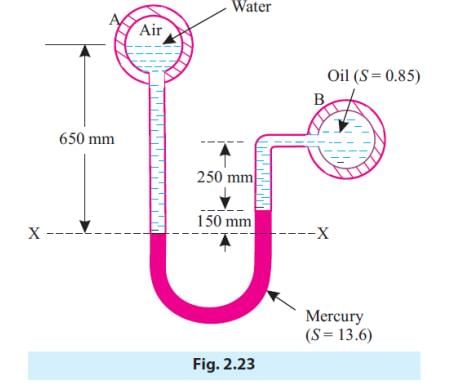
An automobile with projected area 2.6 m2m2 is running on a road with a speed of 120 km per hour. The mass density and the kinematic viscosity of air are 1.2 kg/m3kg/m3 and 1.5×10−5m2/s1.5×10−5m2/s, respectively. The drag coefficient is 0.30.
The metric horse power required to overcome the drag force is
For solid spheres falling vertically downwards under gravity in aviscous fluid, the terminal velocity, V1 varies with diameter 'D' of thesphere as
If a cylinder of radius r = 3 cm and length l = 50 cm is rotating at n = 1000 rpm in air where a wind velocity U = 10 m/s, how much lift L is produced on the cylinder? Assume that r = 1.205 kg/m3 and that air on the cylinder surface does not separate
A cylindrical object is rotated with constant angular velocity about its symmetry axis in auniform flow field of an ideal fluid producing stream lines as shown in the figure given above.At which point(s), is the pressure on the cylinder surface maximum?
A car, frontal projection area 2 m2 , is running at 60 km/h in the calm air of temperature 20C and standard atmospheric pressure. What is the drag D on the car in Newtons? Assume that the resistance coefficient is 0.4.
Flow over a half body is studied by utilising a free stream velocity of 5m/s superimposed on a source at the origin. The body has a maximumwidth of 2 m. The co-ordinates of the stagnation point are:
In given figure, if the pressure of gas in bulb A is 50 cm Hg vacuum and Patm = 76 cm Hg, then height of column H is equal to
The pressure gauges G1 and G2 installed on the system show pressures of PG1 = 5.00 bar and PG2 = 1.00 bar. The value of unknown pressure P is? (Atmospheric pressure1.01 bars)
Refer to Figure, the absolute pressure ofgas A in the bulb is:
Hydrostatic law of pressure is given as
A mercury-water manometer has a gauge difference of 500 mm(difference in elevation of menisci). What will be the difference in pressure?
Pressure drop of flowing through a pipe (density 1000 kg/m3) between two points is measured by using a vertical U-tube manometer. Manometer uses a liquid with density 2000 kg/m3.The difference in height of manometric liquid in the two limbs of the manometer is observed to be 10 cm. The pressure drop between the two points is:
Differential pressure head measured by mercury oil differential manometer (specific gravity of oil is 0.9) equivalent to a 600 mm difference of mercury levels will nearly be:
Pressure drop of water flowing through a pipe (density 1000kg/m3) between two points is measured by using a vertical Utube manometer. Manometer uses a liquid with density 2000 kg /m3. The difference in height of manometric liquid in the two limbs of the manometer is observed to be 10 cm. The pressure drop between the two points is:
A U-tube manometer is connected to a pipeline conveying water as shown in the Figure. The pressure head of water in the pipeline is


